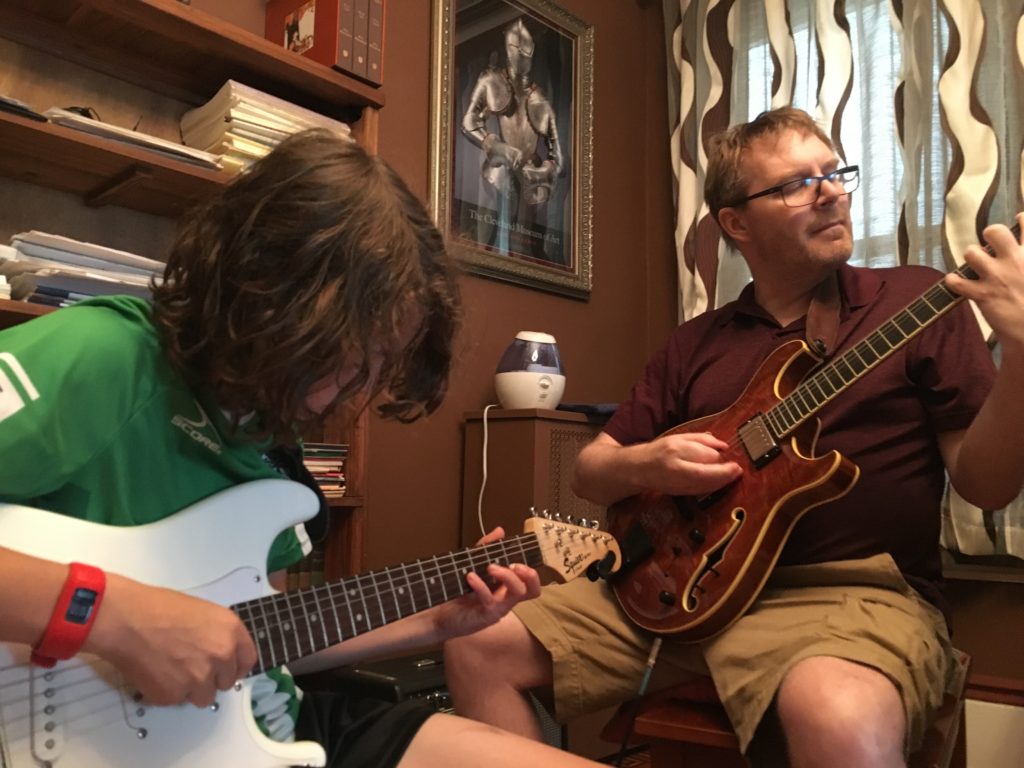My main pedagogical focus is classical piano, but I am quite at home discussing jazz, pop and blues. I have taught piano students how to play Thelonious Monk tunes, blues and pop/rock tunes. I have been teaching since 1991. Over that time, I have learned about many different methods of instruction. I have collected elements that I believe work from many methods and combined them into my own teaching philosophy. I am not saying that I have the “correct” or “only” method of teaching, but I use a method that, during my experience as a teacher, has evolved into a coherent, effective teaching style that keeps people interested and helps them improve. It is one part Sophia Rosoff and one part the lessons I have learned from teaching.
From the Suzuki Method, I have taken the concept of building finger dexterity for younger players and singing with them as a method of ear training. So, with younger players, I sing along with them while they are playing, and encourage them to do the same. This helps them to develop aural recognition of music intervals. I also use the “show and tell” Suzuki Method, where the student watches the teacher play a musical passage on the instrument, then plays it him/herself. In this way, students can play pieces that would be difficult for them to sightread and get the satisfaction playing music that sounds like music from an early point.
From the Pace Method, I have taken the “bigger picture” perspective instead of a piece being just a bunch of notes connected together, as well as the importance of introducing improvisation from the very beginning. It is important that students feel relaxed with the instrument, and can see the shapes of music, not just the individual notes. Just as important as the ability to read a particular note is B is the ability to recognize whether notes are moving up, moving down or staying in the same place. And if the notes are moving, by how far. I use this concept with adults as well when we start working on chords most often used to play popular and jazz music. If a student can see that a C Major chord looks the same on a keyboard as a G major chord, he/she can then use both of those chords in songs. Add another similar looking chord, F, and the student knows enough to play 30% of all popular music ever written (I’m not kidding). I work with students on recognizing which chords feel happy, sad, anxious, etc., because music SAYS something, it’s not just a bunch of notes or chords mushed together.
At the beginning of the first lesson, through conversation and practice, I try to locate a student’s strong points and weak points, then use the strong points to help the weak points along. For example, if a student can match pitch (play a note on the piano and then sing the same note), but has a difficult time with rhythm, we will start working on some songs that are familiar to the student by ear, and note the differences in the written music between a particular note that lasts twice as long as another note, etc.
My belief is that the best teachers are also students, and while I may know a bit more about playing music than a student I am working with, I look at each student I see each as an opportunity to both impart and gather knowledge.
I offer a free one hour meet and greet/trial lesson, so that the student can get an idea of what it would be like to study with me before making a financial investment. I charge $40 for a 30-minute lesson and $75 for a 60-minute lesson. I look forward to hearing from you!
